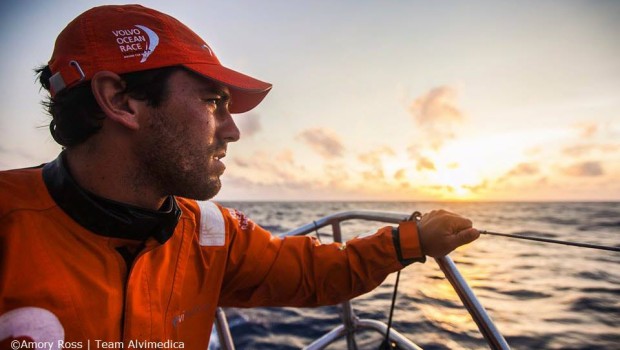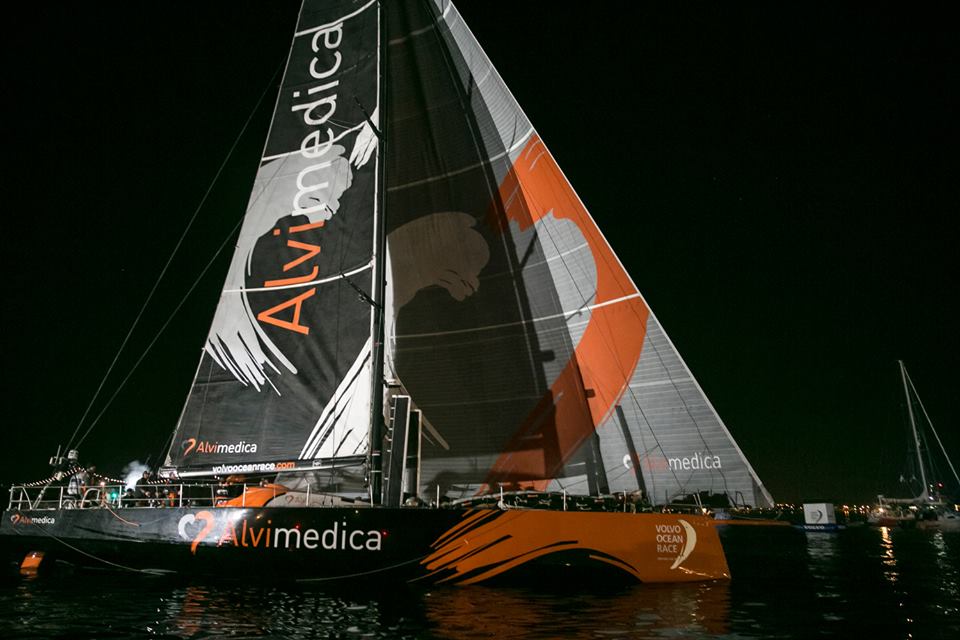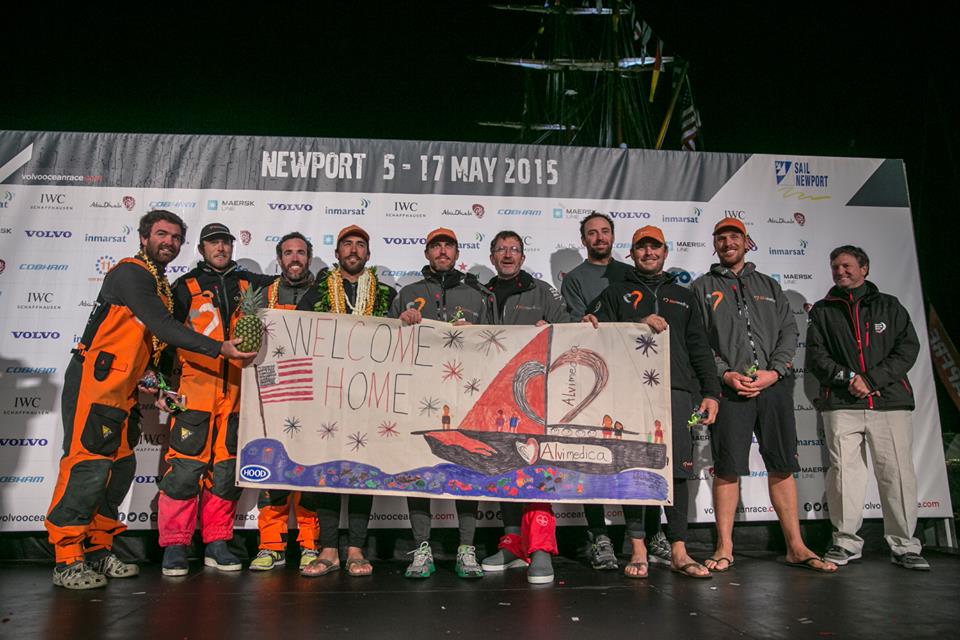Team Alvimedica: Maintaining the faith
Published on May 7th, 2015
Having trained in Newport a year ago, with four of their crew having connections to the city, Team Alvimedica was excited about the sixth leg of the Volvo Ocean Race from Itajai, Brazil to their homeport. A good finish was the goal, followed by a huge celebration from the New England nation.
But when Alvimedica arrived to Narragansett Bay in fifth position on May 7, it was dark, the wind was light, and the outgoing tide was far from welcoming. Last call at the bars had long passed. Not quite what they hoped for.
Scuttlebutt editor Craig Leweck spoke with watch captain Mark Towill to gain insight into how the team plans to move forward.
What happened on Leg 6?
Tactically, this leg didn’t present many opportunities. It was a drag race leaving Brazil, with an initial high pressure system to deal with. When we didn’t nail that decision, we found ourselves on the back foot during a leg that was mostly characterized by conditions that we are not very fast in.
Our weakness is jib reaching, the 60 to 90 degree true wind angle. The combination of J1 on the outrigger with staysail is something we need to get better at. Generally speaking, we are quite good when it’s VMG upwind and VMG downwind, and especially good when it’s heavy air VMG downwind. We also do well in the wider true-wind reaching angles, but the tighter true-wind angle is probably our weakest point.
Unfortunately, this leg had a lot of tight reaching. Anytime it became those conditions, we tended to bleed miles rather than gain them. So this leg was frustrating in that our speed was not a strength.
Describe the challenge of tight reaching.
The outrigger adds a heightened level of complexity to the Volvo Ocean 65. How you have the outrigger set-up and combined with boat tune makes a massive difference, and we are off the pace in that area. Tight reaching presents a fair amount of options for sail and hull trim, and there is a bit of technique involved.
Each team finds their strengths within the tight reaching options, and we just haven’t. That’s the reality of it; we have some work to do. We need to look at how we are going to overcome this, and it is just unfortunate that one of our weaker combinations was prominently featured on this leg. It is tough to catch up when you are behind.
Staying fast in changing conditions is easier said than done.
For a given wind speed and angle, you could have three boats together, and they will all have three different sail combinations. In VMG upwind conditions in 12 knots, the headsail choices could be the masthead, the FRO, or the J1, and each team has a different opinion of what works best.
This leg had a lot of this type of crossover conditions, and when we were in the vicinity of other boats, we often found that we used different sails. When boats appear close on the tracker, yet they are sailing slightly different angles, their different sail combinations might be the reason.
How each team deals with transitions is massive, and I can think back to this past leg of several instances when we lost significant distance by not doing a good enough job when the conditions changed. This is an area where we need to improve. Anticipating a transition, and being set-up for it, minimizes these losses. How quick can you switch sails, move the outriggers, find the fast sheet angle, change hull trim with tanks and keel angle… this is where gains and losses occur.
How would you rate your progress?
When we started the first leg in October, I really had no idea where we would be at this stage. But relative to where we began, I think we are in a pretty good place. This leg certainly wasn’t representative of where we are as a team, but we also have a lot more to give. And despite this having been a tough leg for us, the crew is doing really well, and that’s a good thing.
Our goal is to be the team with the greatest rate of improvement. The nature of the Volvo Ocean Race is to constantly improve during the course of the 8+ month contest. Each team is seeking to improve faster than their competitors, and as we do for each leg, we need to now scrutinize the information to see what we can learn and apply to the next leg. We will review the performance data and refine our polars and crossover charts. We will make any refinements to our sail handling systems to maximize speed through the transitions. Our progress will come from advancing all these small details.
We now have three short legs to go, and hopefully our youthful enthusiasm will be an advantage. We are going to bring it on these legs. But as we sit here in Newport, we are still very much within reach of an overall podium position, and that’s something for us to be proud of.
You just finished… how does it feel?
I am not going to lie – it’s disappointing. We wished to have posted a better result. We had a good result in the last leg, after ripping through the Southern Ocean, but the reality is we are where we are. The positive is that it has narrowed our focus on what we need to work on, and if we can do that successfully, hopefully we can have some success in the next few legs.
Team Alvimedica – Race website – Tracking – Scoreboard – Videos
Background: The 2014-15 Volvo Ocean Race began in Alicante, Spain on Oct. 11 with the final finish on June 27 in Gothenburg, Sweden. Racing the new one design Volvo Ocean 65, seven teams will be scoring points in 9 offshore legs to determine the overall Volvo Ocean Race winner. Additionally, the teams will compete in 10 In-Port races at each stopover for a separate competition – the Volvo Ocean Race In-Port Series. The seventh leg, from Newport, USA to Lisbon, Portugal (2,800 nm), begins May 17 with an ETA between May 22 and 29.












 We’ll keep your information safe.
We’ll keep your information safe.